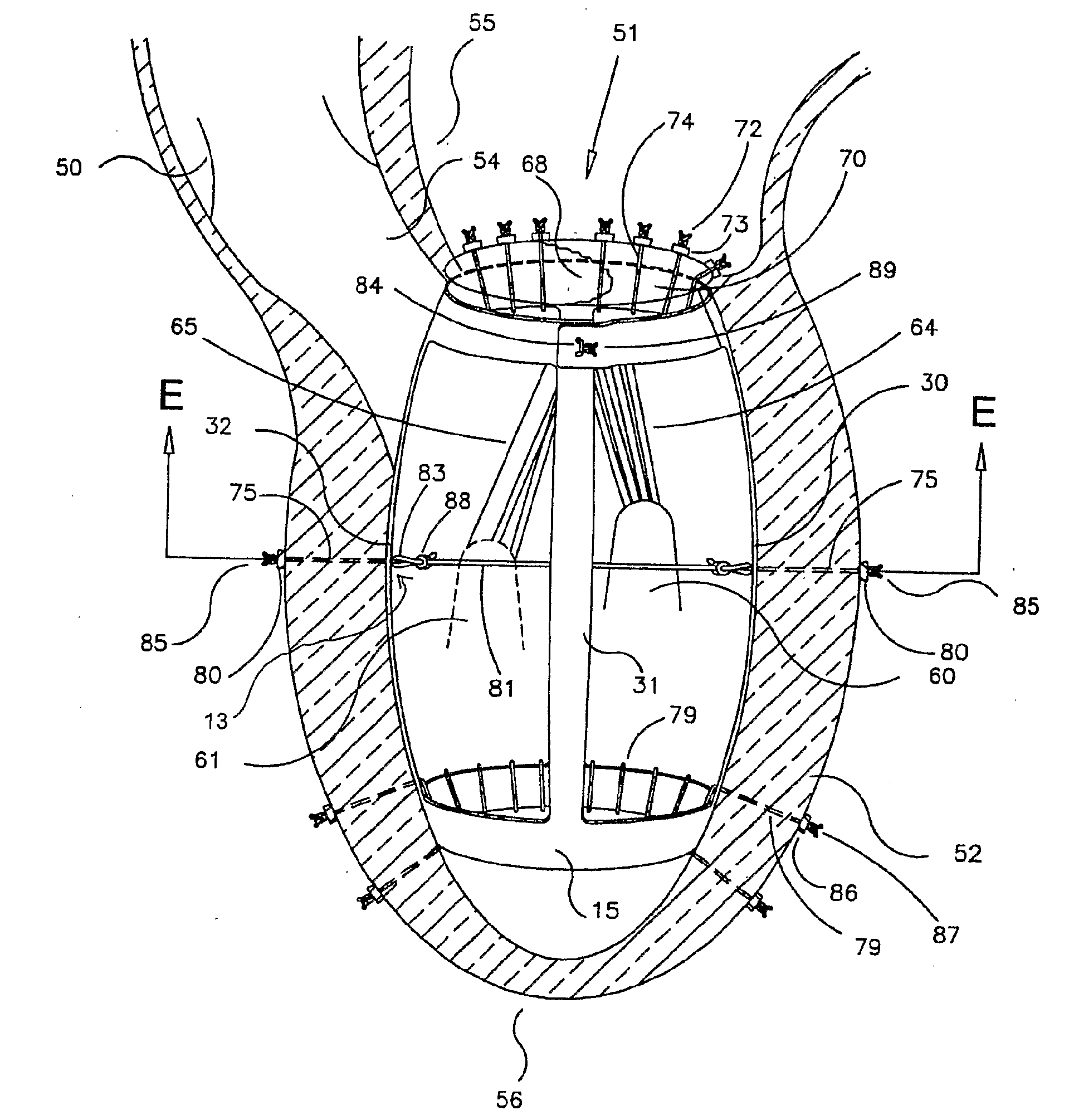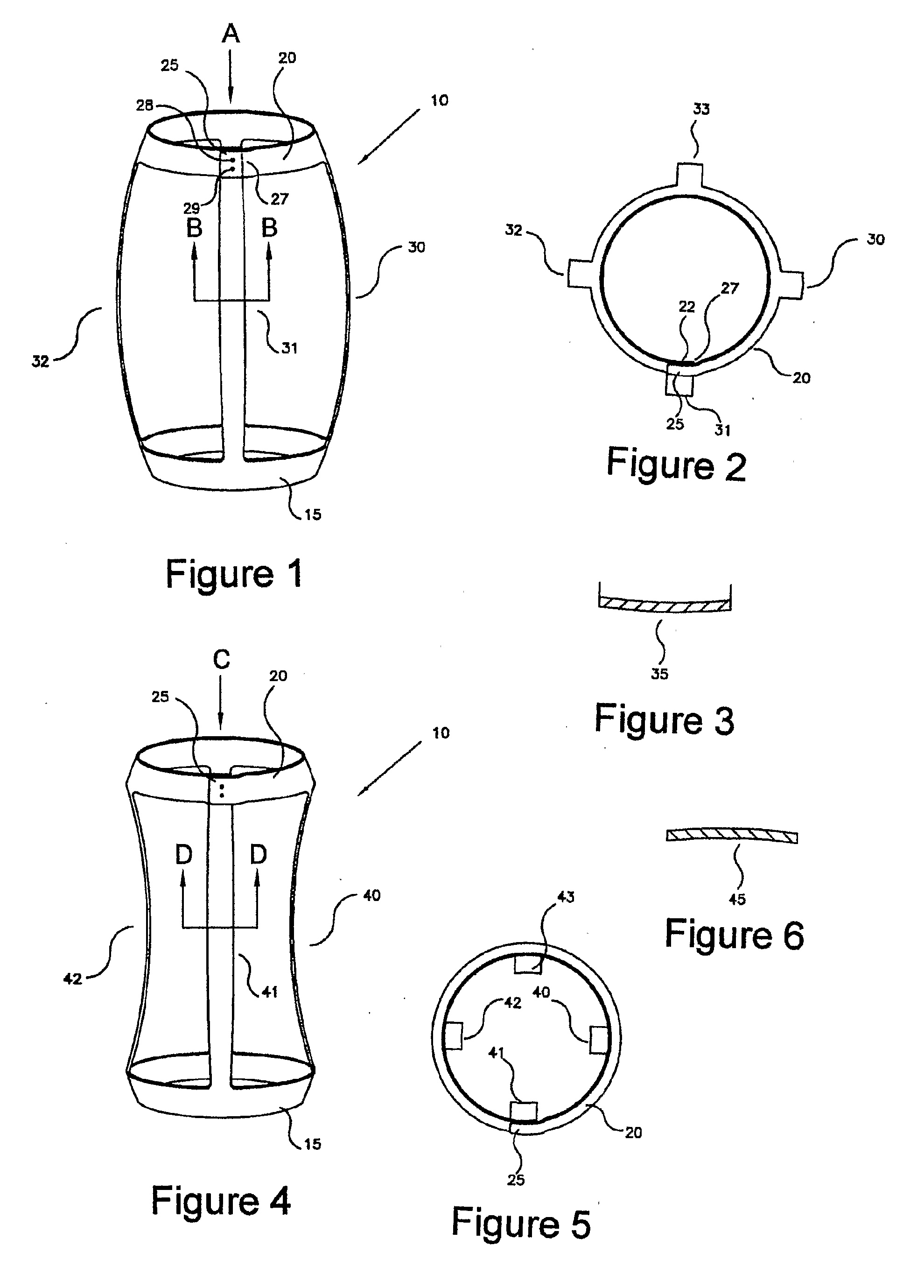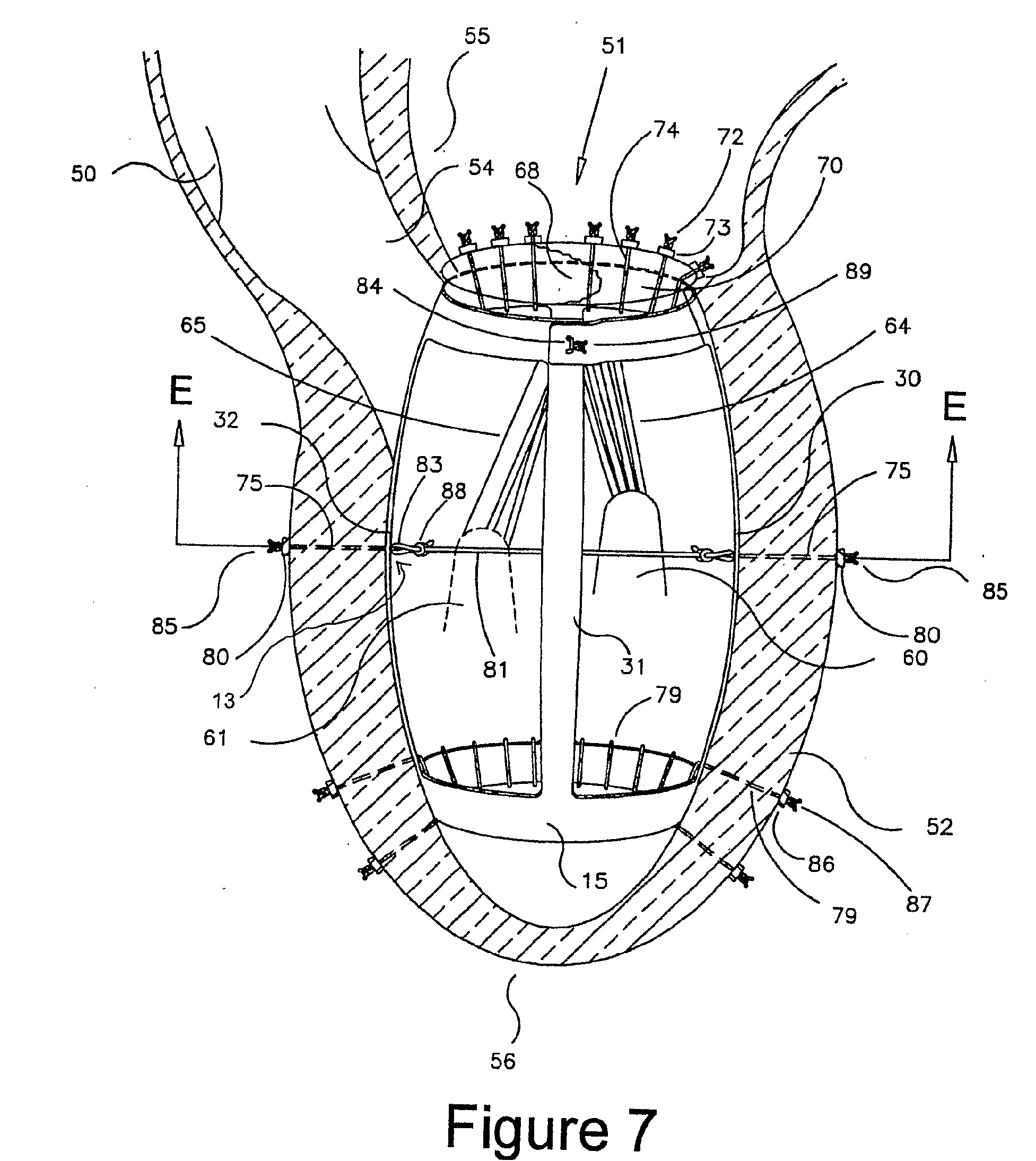Method and Apparaus for the Surgical Treatment of Congestive Heart Failure
a congestive heart failure and surgical treatment technology, applied in the field of methods and apparaus for the surgical treatment can solve the problems increased incidence of congestive heart failure, and further left ventricle dilation and cardiac deterioration, and achieve the desired ventricle shape, less cost, and effective treatment.
- Summary
- Abstract
- Description
- Claims
- Application Information
AI Technical Summary
Benefits of technology
Problems solved by technology
Method used
Image
Examples
first embodiment
[0070]FIG. 7 shows a cross-sectional view of the left ventricle with the invention implanted, and FIG. 8 shows a cross-sectional view of the left ventricle, taken along line EE of FIG. 7. Both FIG. 7 and FIG. 8 show the left ventricle in the early systolic phase, with the mitral valve 51 closed and the aortic valve 50 open. FIG. 7 shows the left myocardium 52, aortic outflow tract 54, and the left atrium 55, left ventricular apex 56, and the aortic valve 50. The mitral valve mechanism consists of the two papillary muscles 60, 61, the two sets of chordae tendineae 64, 65 and the anterior 68 and posterior 70 leaflets of the mitral valve.
[0071]The bistable cage 10 is secured to an inner circumferential periphery 13 of the ventricle by means of suitable sutures 75, passed through the myocardium 52 and which maybe supported by external epicardial pledget members 80 or other suitable reinforcing structures. For simplicity, the specification mentions only pledgets specifically. The sutures...
second embodiment
[0077]Although not illustrated, the bistable cage could be enclosed in a biocompatible sheath or coating as discussed with respect to the second embodiment below.
[0078]In restoring an optimal mechanically efficient elliptical cardiac shape, the device allow an effective range of sarcomere length change to maximize resting and active tension states for optimization of stroke volume throughout a large range of after load. Furthermore, in addition to fixing diastolic and systolic volumes, the devices assist the active phases of both diastole and systole by augmenting the active contractile force of diseased myocardium in systole and the relaxation of myocardium in diastole. In systole, maximum systolic emptying is increased and, in diastole, the devices provide an augmented restoring force that provides “suction” in early diastole to enhance early ventricular filling.
[0079]A second embodiment of the apparatus implantable in a heart ventricle for providing mechanical assist to the opera...
embodiment 300
[0098]FIG. 30 shows a plan elevation of an additional embodiment 300 of the spring band 200 previously described, but that incorporates a sub-annular mitral annuloplasty ring 304, that is attached to the planar sections 320, 325 by struts 306, 307. FIG. 30 shows the spring member / annuloplasty device in its final circular form, where the four suture tails 331, 332 and 336, 337 have been tied to form knots 390, 392 (shown later in FIG. 37).
[0099]FIG. 31 shows a side elevation of the spring band / annuloplasty device taken in the direction of arrow M in FIG. 30. FIG. 32 shows a side elevation of the spring member / annuloplasty device taken in the direction of arrow N of FIG. 30. FIG. 33 shows an enlarged part side section taken along line OO of FIG. 30. FIG. 34 shows an enlarged part side section of the annuloplasty ring member 304 taken along line PP of FIG. 30. Strut 307 inner metallic leg member 405 terminates at its upper end with hoop 450 and overlapping length 455.
[0100]As shown in ...
PUM
 Login to View More
Login to View More Abstract
Description
Claims
Application Information
 Login to View More
Login to View More - R&D
- Intellectual Property
- Life Sciences
- Materials
- Tech Scout
- Unparalleled Data Quality
- Higher Quality Content
- 60% Fewer Hallucinations
Browse by: Latest US Patents, China's latest patents, Technical Efficacy Thesaurus, Application Domain, Technology Topic, Popular Technical Reports.
© 2025 PatSnap. All rights reserved.Legal|Privacy policy|Modern Slavery Act Transparency Statement|Sitemap|About US| Contact US: help@patsnap.com



